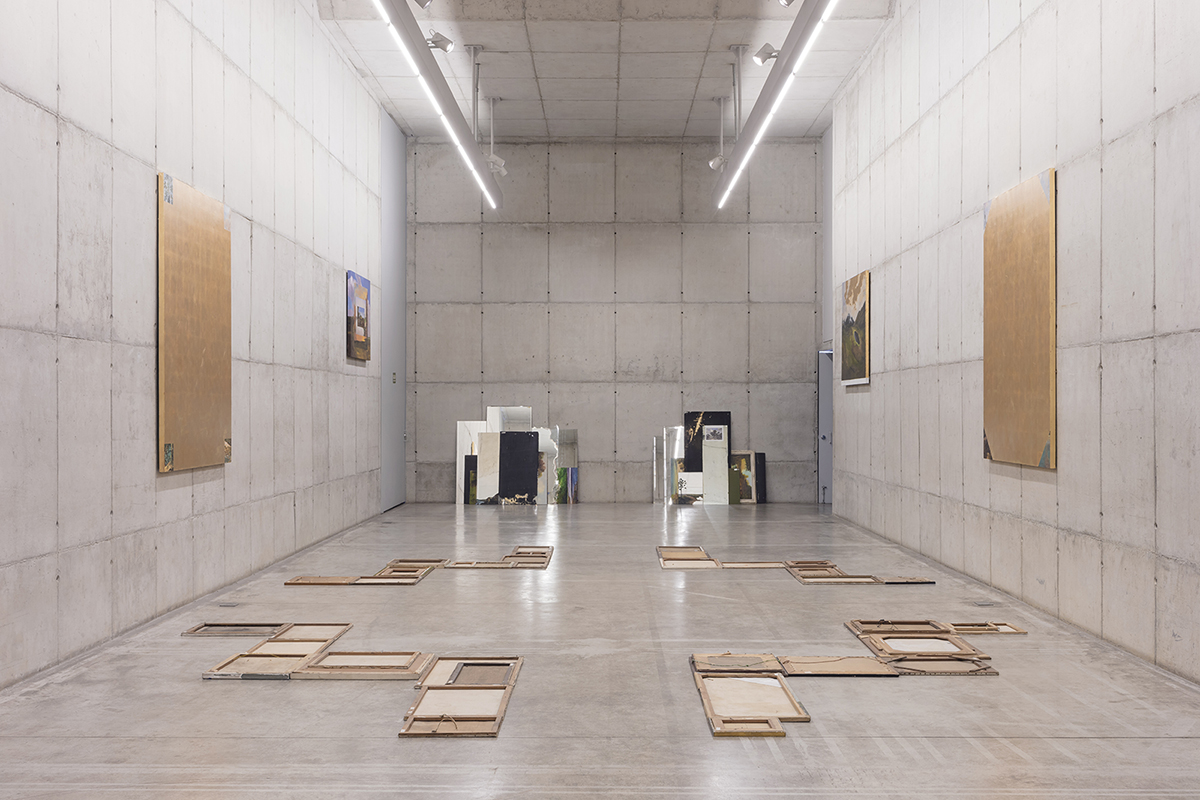As an image maker in a world in which they constantly multiply, Sandra Gamarra recycles and reincorporates them to investigate their origins and speculate upon their possible fate. For her fifth exhibition at Galeria Leme, she uses the occidental genre of landscape “in the arts” to show its origins, its features as well as the impact it has had on our relationship with the environment. With her constant appropriation of images and questioning of art through painting, Gamarra uses the means by which the idea of the European landscape was created with the intention to unveil its supposed realism and subsequently confront it with Nature.
Since landscape appeared during the 15th century as its own genre in western art, it invaded other areas of knowledge. Today, it may be understood as a social, sound, visual, economic, psychological concept, as if it were a tangible truth that forgets that landscape has been built as an illusion, an approximation and a fragmentation of nature, which in itself does not seek to embrace it completely. By creating partial points of view, a landscape “does not trace the contours or examine the topography of surroundings as it selects and reforms nature to naturally represent it in an exemplary manner.” (Sutton, 1994, The Golden Age of Dutch Landscape Painting, p.16.) In such “exemplary” way, landscapes also served as certificates of authenticity as painting delimited and domesticated territories. Just like a map, landscapes are used as tools to relate to the territory, that edits and reframes it from a unique perspective.
On the other side, the representation of nature by pre-Columbian cultures was always symbolic and abstract; as such, the “realist” illusion of landscape did not exist. Compared to the Christian logic that believes that the world is created by a god, pre-Columbian cultures placed their gods in nature. This fundamental distinction regarding the interpretation and interaction with nature is the product of a mentality that does not try to dominate nature (their gods), but knows that instead, it is dominated by it.
Today´s Peru, as well as other nations of the region, exports itself as a country of landscapes. It instrumentalizes it for tourism or for symbols of power and permanence in banknotes and coins, credit cards, awards, etc. Such a “landscape,” that serves as a unifying axis of the Peruvian, reduces nature, much more complex and sensitive, to our action. The incomprehension of environmental consequences due to the extraction of natural resources and land use is a proof of such distortion.
Within our society, that tirelessly generates images, landscape painting might seem an obsolete genre, relegated to decorate hallways and screensavers. While landscape photography took over paintings´ relay, popularizing it through tourism, advertising and social networks, it maintains the fragmentation and reduction that painting, of which it is its heir, built as “reality.”
Landscape in Quotations Marks takes photographs of landscapes from the Peruvian and Brazilian press as well as reproductions of works from different periods as a starting point and places them on surfaces such as mirrors, second hand paintings, and false gold leaf. As such, the symbolic charge and the properties of each material makes painting lose the independence given by the white surface.
Sandra Gamarra retakes the landscape genre to question its structure, identify the implications it has on modes of thinking and restore its lost aura of falsity. From this point of view, the distortions inflicted by our reasoning can be seen when images are not used for the purposes for which they were created.
Antoine Henry Jonquères








